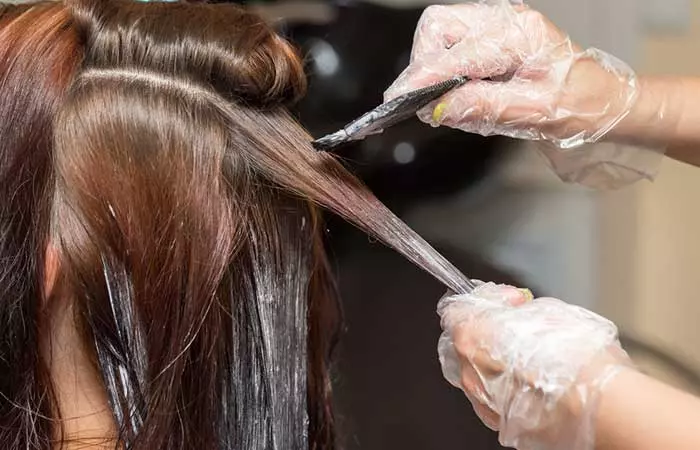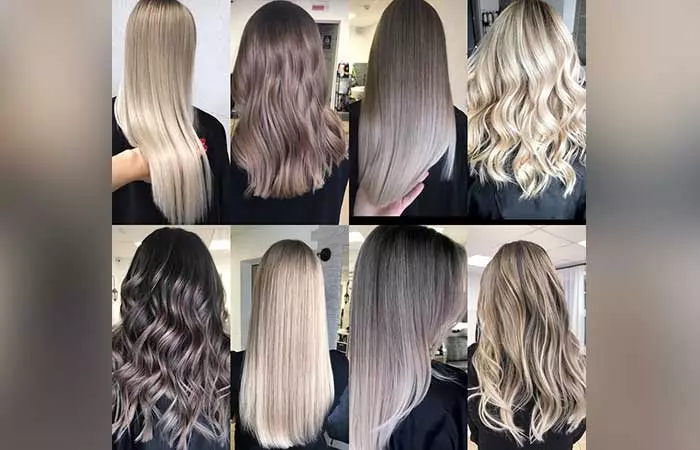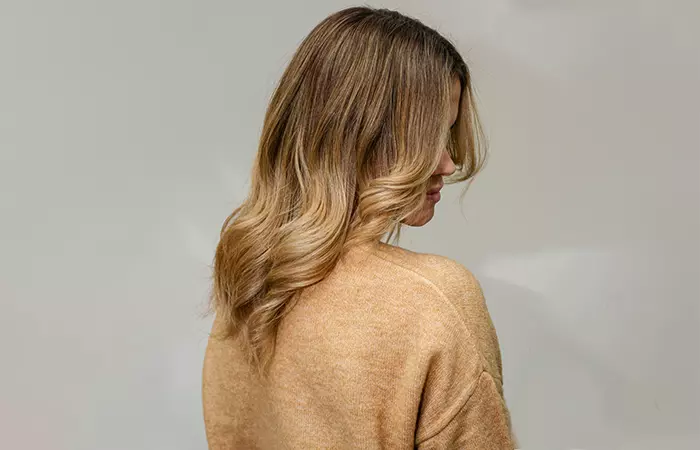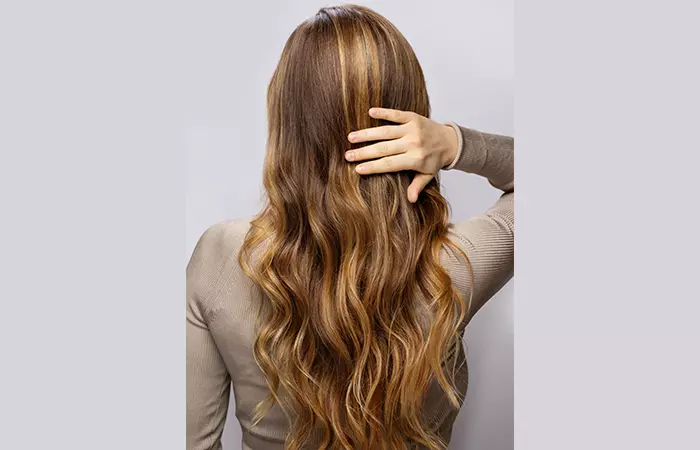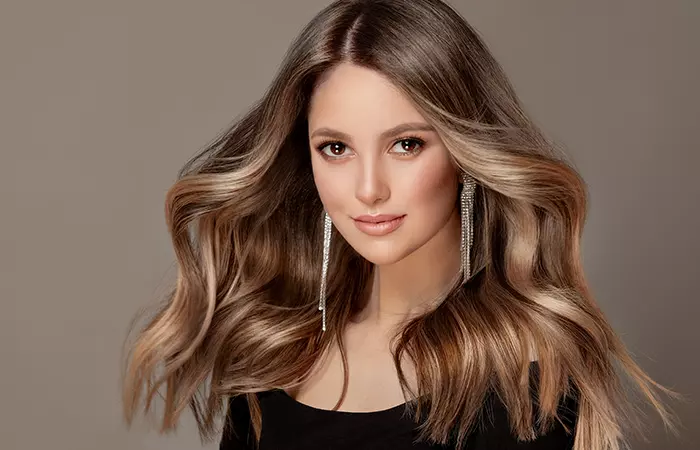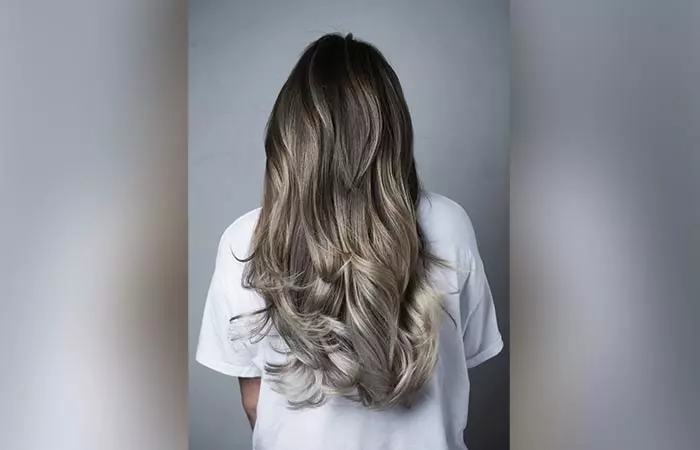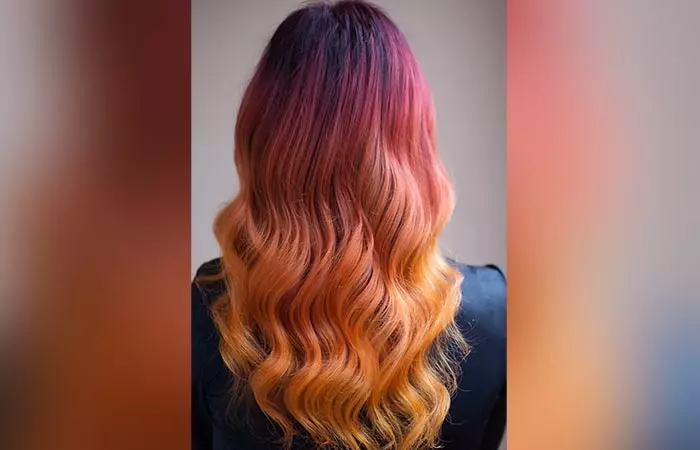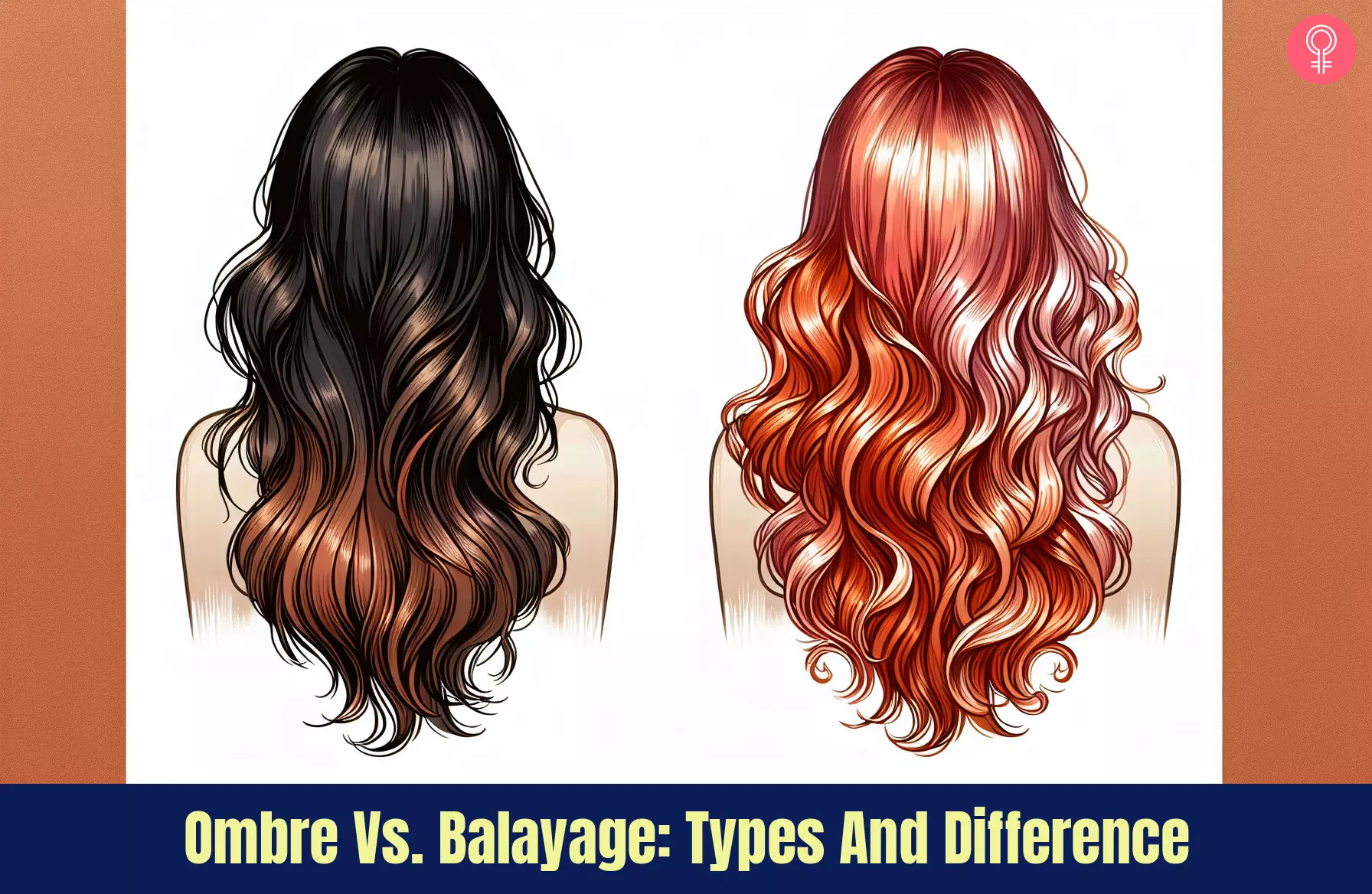Balayage hair color ideas are often suggested for blonde and brunette hair, but depending on the color choice, a balayage can work with any natural hair color. A balayage is easy to maintain as the color is lighter at the roots and gets heavier at the hair ends. The coloring technique allows you to explore your options. You may go for full-color highlights covering every hair section or partial highlights that only cover a few layers at the top. One of the best examples of the balayage technique is the sun-kissed hair color trend. Origin Balayage (pronounced: buh-lie-ahze) is a French word meaning “to sweep” or “paint.” It originated at the Carita Salon in Paris during the 70s and was originally called Balayage à Coton as, at that time, cotton strips were used to separate colored hair sections. It gained attention during the late 90s and then took the world by storm.
Types Of Balayage
The three variations of the balayage technique include:
V-Shaped Method:
This technique employs a 1, 2, or 3-point system to add color to particular sections. This method involves applying the dye nearer to the scalp, creating a bolder look.
Foilayage Method:
In this technique, the hand-painted hair is folded in tinfoil and left to process. This is normally used to color naturally dark hair as the foil traps the heat and oxidizes the hair faster.
Flamboyage Method:
This hair dye technique uses adhesive strips to saturate the hair color on individual hair sections to lighten and enhance the natural hair color. It gives the hair a reflective or slightly oil-slick look. How Long Does It Take? It can take anywhere between an hour to three hours, depending on the coverage. When To Choose This Technique: If you want a naturally swept color blend where lighter shades organically bleed into darker shades or vice versa (depending on your natural hair color). You should go for this if you are looking for a low-maintenance color and natural look. When Not To Choose This Technique: If you have colored hair or color pigment buildup on the strands (due to frequent dyeing), do not go for balayage. Avoid it if you have brassy hair or are in a hurry and cannot dedicate the desired time for hair care. With so many different highlighting techniques to choose from, what makes the balayage stand out? Learn about the benefits of a balayage in the next section.
Benefits Of Balayage
The balayage offers many advantages for those seeking a natural, flowy, and sun-kissed hair look. Unlike traditional highlights, this technique creates a seamless, blended transition between shades. This results in a softer, more natural appearance. This low-maintenance technique allows for longer intervals between touch-ups. Thus, opting for a balayage is the perfect practical choice for individuals with busy lifestyles. It also provides versatility, as it complements various hair lengths and textures. You can customize and create your unique looks as per your aesthetic effortlessly. This hand-painted technique ensures that the color is strategically placed to enhance your facial features, while adding dimension to your locks. Additionally, as the color grows out, there is no harsh line of demarcation, allowing for a graceful transition. In the next sections, we have explored ombre hair and how it is different from balayage. Read on to know more!
What Is An Ombré?
An ombré is a two-toned coloring technique where a darker shade flows into the lighter shade, creating a gradient effect. The darker shade is often the hair’s natural color, or you may choose to color it a few shades darker. The lighter shade at the hair ends is usually blonde or a light brown hue. Ombré hair color ideas can also be done with bright colors like red, blue, green, and purple to add more edge. Origin Ombré is a French word (pronounced: Ohm-bray) meaning “shade” or “shadow.” It originated in 2008 during the recession to color the hair without spending too much money.
Types Of Ombré
The three variations of this coloring technique are:
1. Ecaille
The beautiful colors of a tortoiseshell such as golden blondes, caramels, and chocolates are recreated to add depth and dimension to the hair.
2. Sombre
It is a softer blend of colors and uses mostly pastel and lighter shades to create a subtle gradient effect.
3. Color Melting
This technique may involve two or three colors to create a more colorful look. How Long Does It Last? With the right care and regular touch-ups, an ombré can last up to three months. When To Choose An Ombré: Go for ombré if you want to highlight your natural hair color or want a dramatic look with a natural feel with bold colors. When Not To Choose An Ombré: While an ombré is easy to maintain, it looks great on healthy hair. Ombré requires bleaching the hair. If you have dry and damaged hair with split ends, it can cause severe damage. Still confused? Here are the basic differences between the two hair color techniques simplified for you.
The Difference Between Balayage And An Ombré
The basic difference between an ombre and balayage is that one is a hair coloring trend, while the other is a hair coloring technique. Balayage is a highlighting technique and gives a natural and softer ombré. On the other hand, an ombré amplifies your natural hair color or is used to add drama to your locks. Want to know which one is more pocket-friendly? Scroll down, check the average costs, and compare the cost of balayage vs. ombre.
Balayage Or Ombré: Which Costs More?
A salon may charge anywhere between $100 and $250 for an ombré. A balayage will cost you between $50 and $200. The prices may differ based on these factors:
The Hair Length: The price for coloring shorter and medium hair will be lesser than longer hair. Coverage: Full highlights are costlier than partial highlights. Brand: Some famous salons might have a higher price than local salons. Some even charge based on the expertise and experience of the colorist. Additional Charges: Additional treatments like bleaching (to remove existing color) or other hair treatments will affect the overall cost.
Is balayage or ombre better for straight hair? A balayage is a coloring technique used to achieve an ombre look, while an ombre is a two-toned coloring trend. And you must know the exact difference between balayage and ombre before changing your hair color. The former technique requires high hair maintenance compared to the latter. When you pair the right ombre colors with the balayage technique, you can achieve shiny and silky hair with volume. Don’t forget to discuss color choices with your hairstylist if you want to get this result. We hope this article clears all your doubts about balayage and ombre techniques in detail. If you have thin hair, ombre will be your best option. But if you have medium to coarse hair, you will want to go with some trendy balayage styles for straight hair. When in doubt, pick the balayage method because it works with every hair type and will never go out of style! Which is more damaging – ombre or balayage? Balayage is less damaging. Ombre is harder on the hair and can be more damaging because it requires smaller horizontal sections of hair to be fully saturated with bleach and color. Balayage can require bleach and color, but the technique includes a process where only the top needs to be saturated and is typically achieved with v-shaped sectioning. Therefore, balayage is less damaging than ombre. Can you do both balayage and ombré? Balayage is the technique, and ombre is the style. Therefore, if you are doing ombre, you use the balayage technique.
Illustration: Ombre Vs. Balayage: Types And Difference
Have you ever wondered about the difference between ombre hair and balayage? Check this video to explore the techniques and decide which one is right for you.
